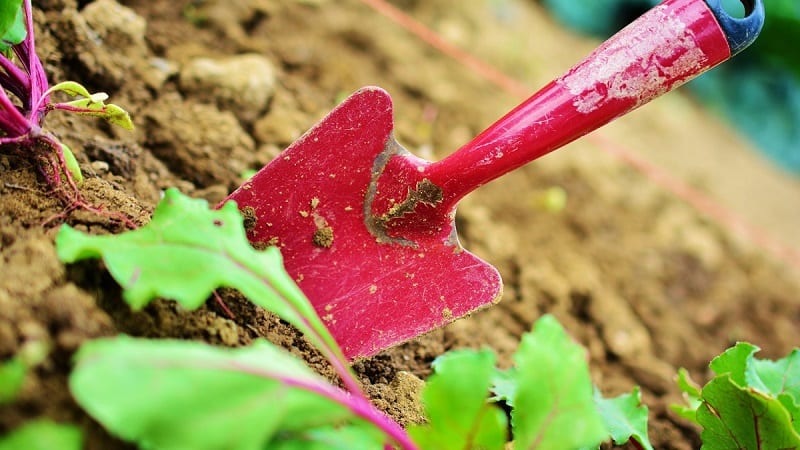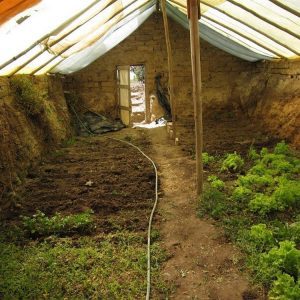Researchers have long warned that the agricultural practice of tilling the ground before planting disrupts the delicate ecosystem that sustains healthy soil. Digging upends the network of microorganisms, insects, worms, and soil layers that keeps soil productive.
This explains the popularity of no-dig garden beds. No-dig gardening usually involves building atop the soil, as is, so that it maintains its natural structure.
As a remedy for nutrient-deprived, dry, and highly compacted soil, no-dig methods require time – sometimes years – to work.

The Double-Dig Approach
Double-digging is an alternative approach. The method involves loosening problematic soil just enough for immediate planting. The basic goal is the creation of an extra deep bed of loose, amended soil without inverting the soil layers.
Double digging is so-called because you dig to a depth of approximately two spading forks. The practice requires more work at the outset than tilling. In a garden with highly compacted soil, you’re likely to feel like you’re trying to dig to China.
When done correctly, however, you only have to do it once. Here’s how:
Step-by-Step Double-Dig Garden Bed
- Drive four stakes into the ground, forming the corners of a rectangle to mark the area of the bed. Four feet is the maximum width that allows easy access to the middle of the bed. Remove existing vegetation from the area.
- Dig a 12-inch wide trench about 8 inches deep in one end of the designated bed. Set aside the excavated soil in a wheelbarrow.
- Push a digging fork as deep as possible into the bed and then rock it back and forth to gently loosen the soil. Spread a few inches of compost in the bottom of the trench, working it into the soil using the same technique. Do not turn the soil over.
- Dig another a 12-inch wide trench in the adjacent section of the bed. Use the excavated soil to fill the first trench. Loosen the soil at the bottom of the second trench and enrich it with compost using the same technique.
- Repeat this process until you have loosened the topsoil of the entire bed. Use the soil from the first trench – still waiting in your wheelbarrow – to fill the last trench left at the end.
- Spread a layer of compost over the completed bed. Mulch vigorously to suppress weeds and improve soil moisture. Then rake the bed into an even surface for planting.

(Photo: Staff Sgt. Mike Meares/US Air Force)
Pros and Cons
Some argue that double-dig garden beds are never necessary. They may be right. A deep, thick layer of mulch and compost or a hügelkultur raised bed over the soil will work just as well.
But for many proponents of double-digging, the more relevant issue is what’s available at the moment and what follows next. Sheet-mulching and hügelkultur beds require more soil, compost, organic matter, and time.
Proponents of double-digging contend that, when done correctly, you only have to double-dig once. With continuous mulching and compost, natural processes should restore the soil’s condition without the need for further digging.
We aren’t arguing for either. What we do submit is that there might be a time and place for double-digging garden beds in certain situations.








